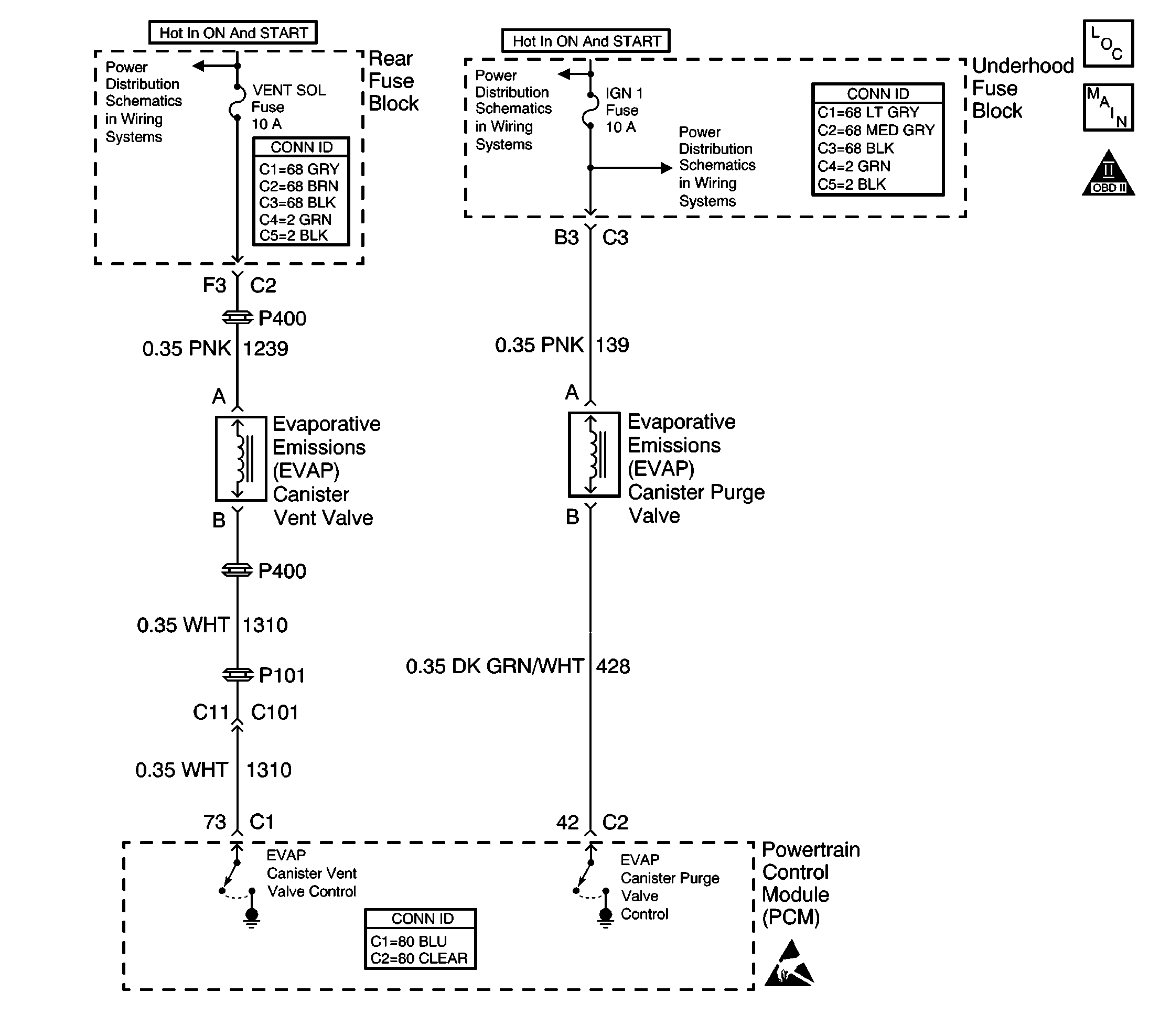
Circuit Description
The PCM uses output driver modules (ODMs) to control many functions of the engine, and the transaxle. The ODMs supply the ground path for the PCM controlled device when the PCM commands the device ON. Each ODM is able to control several outputs. Unlike the quad driver modules (QDMs) used in earlier model years, the ODMs are able to diagnose each output circuit. The PCM monitors the ODMs for circuit conditions that are incorrect for the commanded state of the ODM. If the PCM detects an improper circuit condition in the ODM that controls the EVAP vent solenoid, DTC P0449 will set.
Conditions for Running the DTC
| • | The engine is running. |
| • | System voltage is between 8 and 16 volts. |
Conditions for Setting the DTC
The PCM detects a circuit conditions that is incorrect for the commanded state of the ODM that controls the EVAP vent solenoid.
The condition is present for at least 10 seconds.
Action Taken When the DTC Sets
| • | The PCM illuminates the malfunction indicator lamp (MIL) during the second consecutive trip in which the diagnostic test runs and fails. |
| • | The PCM stores the conditions present when the DTC set as Freeze Frame/Failure Records data. |
Conditions for Clearing the MIL/DTC
| • | The PCM will turn the MIL OFF after the third consecutive trip in which the diagnostic runs and passes. |
| • | The history DTC will clear after 40 consecutive warm-up cycles have occurred without a malfunction. |
| • | The DTC can be cleared by using the scan tool Clear DTC Information function. |
Diagnostic Aids
If the condition is intermittent, refer to Intermittent Conditions .
Test Description
The numbers below refer to the step numbers on the diagnostic table.
-
Listen for an audible click when the solenoid operates. Be sure that both the ON and the OFF states are commanded. Repeat the commands as necessary.
-
This step tests for voltage at the coil side of the EVAP vent solenoid. The ENG IGN fuse supplies power to the coil side of the EVAP vent solenoid.
-
This step verifies that the PCM is providing ground to the EVAP vent solenoid.
-
This step tests if a ground is constantly being applied to the EVAP vent solenoid.
Step | Action | Values | Yes | No |
|---|---|---|---|---|
1 | Did you perform the Powertrain On Board Diagnostic (OBD) System Check ? | -- | ||
Does the solenoid turn ON and OFF when commanded? | -- | |||
3 |
Does this DTC reset? | -- | Go to Intermittent Conditions | |
Does the test lamp illuminate? | -- | |||
Does the test lamp turn ON and OFF with each command? | -- | |||
Does the test lamp remain illuminated with each command? | -- | |||
7 |
Did you find and correct the condition? | -- | ||
8 |
Did you find and correct the condition? | -- | ||
9 |
Did you find and correct the condition? | -- | ||
10 |
Did you find and correct the condition? | -- | ||
11 | Repair the coil side feed circuit of the EVAP vent solenoid. Refer to Wiring Repairs in Wiring Systems . Is the action complete? | -- | -- | |
12 | Replace the EVAP vent solenoid. Refer to Evaporative Emission Vent Valve Replacement . Is the action complete? | -- | -- | |
13 |
Important: Program the replacement PCM. Replace the PCM. Refer to Powertrain Control Module Replacement/Programming . Is the action complete? | -- | -- | |
14 |
Does the DTC reset? | -- | ||
15 | With a scan tool, review the Stored information (capture info). Does the scan tool display any DTCs that you have not diagnosed? | -- | System OK |
